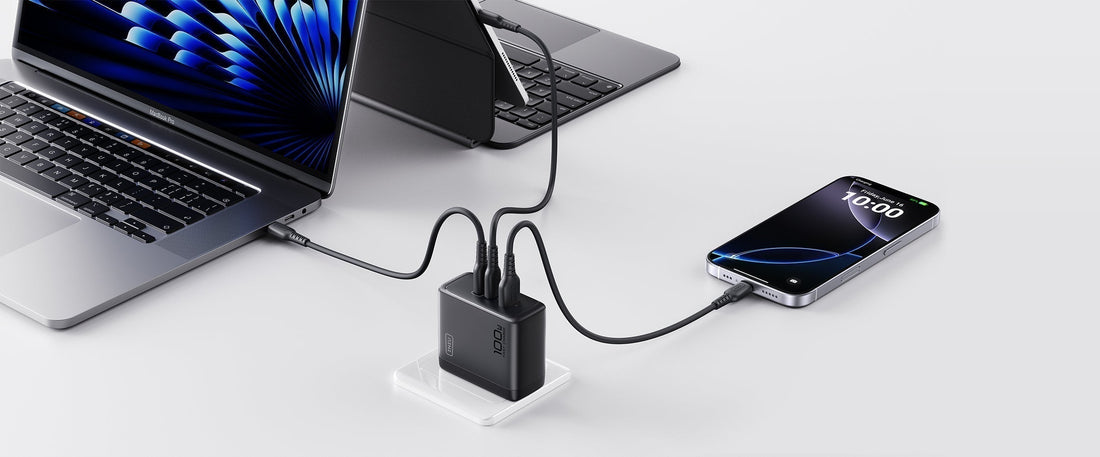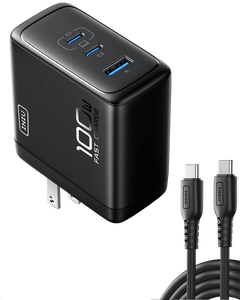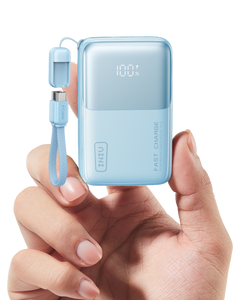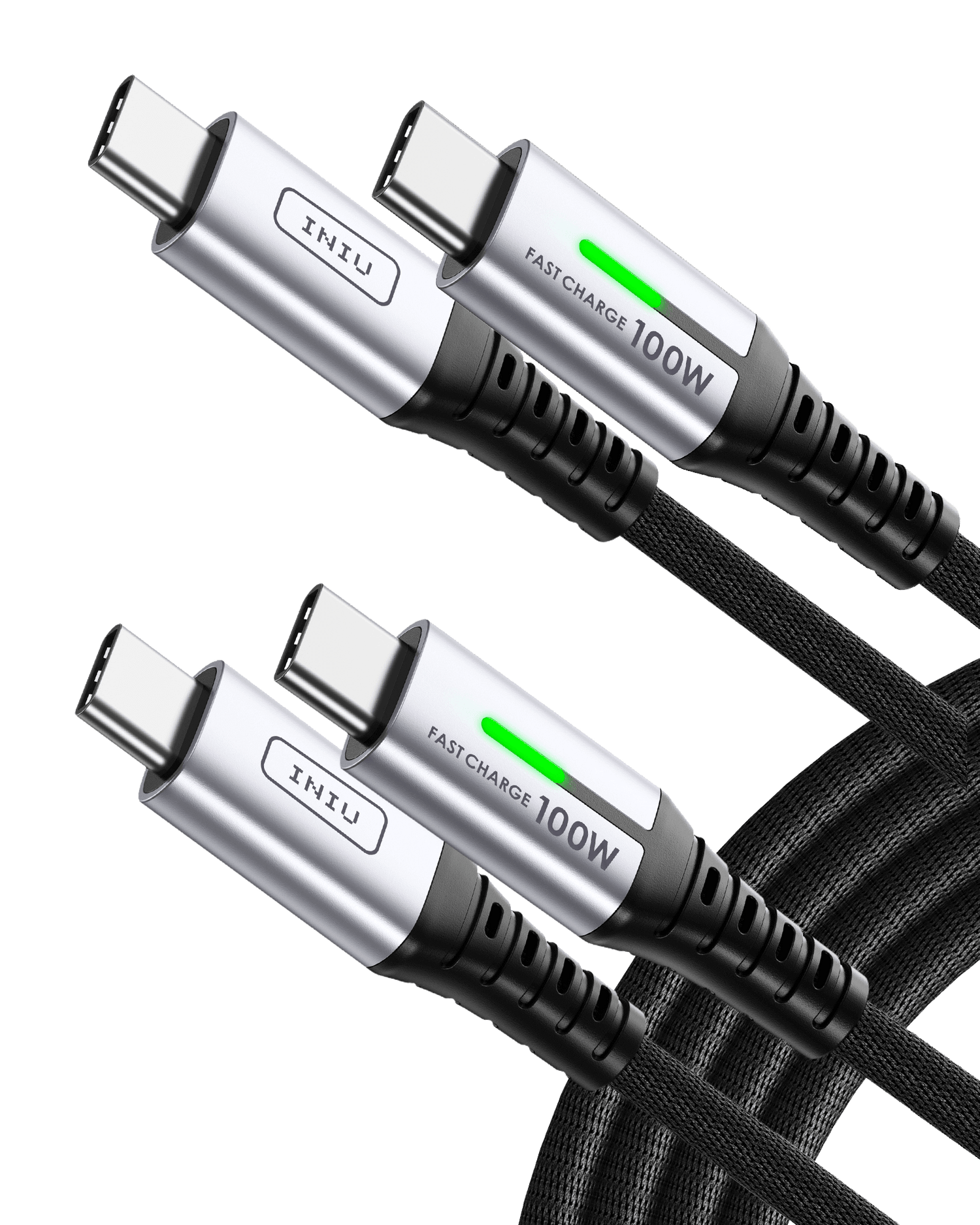
PD & QC Explained — Full Technical Guide to Fast Charging
Modern phones, tablets, laptops, and fast charging power banks rely on intelligent power protocols that negotiate voltage and current between the adapter and the device. Two families of technology dominate that conversation today: USB Power Delivery (PD) — the industry-standard that runs over USB-C — and Qualcomm Quick Charge (QC) — a widely deployed, vendor-driven family of fast-charge methods that evolved from early voltage-trigger tricks into PD-compatible systems.
This article explains each protocol in its own right: what it does, how it works at the protocol level, the power ranges and implementation details, and the practical takeaways buyers should use when choosing a PD charger or a QC charger-capable accessory.
USB Power Delivery (PD) — deep technical block

What does "PD" actually mean?
USB Power Delivery (PD) is the USB Implementers Forum's standardized power-negotiation protocol that runs over the USB-C connector. PD defines a policy engine and message set that lets a power source (the charger) and sink (the device) agree on an electrical "contract" — voltage, current, and role — so a single port can safely power phones, tablets, and even laptop-class loads. PD releases have evolved: PD 2.0/3.0 standardized flexible profiles and PPS; PD 3.1 added an Extended Power Range (EPR) that enables up to 240 W through properly specified cables and connectors.
If you're wondering what a PD charger means in a nutshell, think of PD as "a negotiated power contract over USB-C" — not a fixed brick of power. That negotiated contract is what differentiates a generic "charger" from a true PD USB-C charger.
How does PD negotiation work at the protocol level?
PD uses the USB-C Configuration Channel (CC) for in-band power signaling. The high-level sequence is:
Discovery — when a cable is connected, the Source and Sink detect connection and roles through CC line resistances and pull terms.
Source Capabilities — the charger sends one or more capability messages describing available voltage/current options (fixed supplies and PPS ranges).
Request — the sink evaluates the capabilities and sends an explicit Request Data Object (RDO) requesting a particular voltage/current combination.
Accept / Power Ready — the source accepts and transitions its VBUS to the agreed level; when stable, it signals Power_Ready and charging begins.
Contract upkeep / re-negotiation — either side can re-request new levels later (for example: a device requests higher power when entering heavy use).
Those messages are implemented as PD protocol frames carried over the CC wire; PD controllers (chips) implement the PD policy engine and timing.
What power ranges and supply models does PD define today?
PD classically supported up to 100 W via the 20 V / 5 A USB-C mode. PD 3.1 introduced Extended Power Range (EPR) to enable higher voltages (e.g., 28 V, 36 V, 48 V) and up to 240 W (48 V @ 5 A) when used with EPR-rated, full-featured USB-C cables and connectors. In practice, you'll see:
Standard PD (legacy): common fixed rails like 5 V, 9 V, 15 V, 20 V (up to 100 W total).
PPS (Programmable Power Supply) ranges within PD: allows fine-grained programmable voltages inside a specified window (covered below).
EPR (PD 3.1): higher fixed voltages that let laptop OEMs move away from barrel jacks toward single-cable delivery up to 240 W. Buyers should check both the adapter and cable ratings before assuming they'll get EPR power.
What is PPS (Programmable Power Supply) and why does it matter?

PPS is an optional PD feature that gives the sink the ability to request small, incremental changes to the source voltage and current in order to optimize charging efficiency and reduce thermal dissipation. The practical mechanics:
The sink requests a target voltage and current inside a PPS window; the source adjusts the DC-DC converter to that exact point.
The PD/PPS spec defines fine steps (voltage steps on the order of ~20 mV and current steps commonly ~50 mA) so the charger can present a near-continuous range rather than discrete fixed rails.
Because the charger produces a closer match to the battery's preferred charging voltage, the device's internal buck-conversion losses fall, which lowers heat at both phone and charger and often enables faster sustained charging.
For many modern phones that advertise "fast charging," you'll see better real-world sustained speeds when the adapter supports PPS than when the device must jump between fixed voltages.
Which real-world devices and use cases should be designed with PD in mind?
USB Power Delivery is the clear choice whenever you need both universality and higher power levels. Some of the most common scenarios include:
Smartphones — Most modern phones now support at least some level of PD fast charging. Choosing the right fast PD phone charger will allow your phone to charge faster.
Laptops and mobile workstations — Modern PD chargers with Extended Power Range (EPR) can deliver 100W or more, replacing bulky proprietary barrel connectors.
Tablets and handheld gaming consoles — Devices like the Nintendo Switch draw more power than a phone, making USB-C PD chargers the standard for smooth performance.
Multi-port chargers and docking stations — These need to distribute power across several devices at once. PD allows them to allocate tens of watts intelligently to each port.
Fast charging power banks — Many portable batteries now support PD not only to charge laptops and tablets but also to recharge themselves at high speed.
In short, if your device or accessory is designed for more than just phone-level charging, building around PD—with the right cable and connector choices—is the safest long-term engineering decision.
Qualcomm Quick Charge (QC) — Deep Technical Block

What is Qualcomm Quick Charge, and why was it created?
Qualcomm Quick Charge (QC) is a family of proprietary fast-charge technologies developed by Qualcomm beginning in the 2010s to speed up battery fill-times for smartphones using Qualcomm SoCs. Early QC versions exploited higher charger output voltages to deliver power without requiring thicker cable conductors; later generations introduced intelligent negotiation (INOV) and then converged toward USB-PD and PPS compatibility. QC's goal was always the same: safely increase delivered watts while protecting battery health and limiting device heat. Qualcomm's Quick Charge roadmap includes QC1 → QC2 → QC3 → QC4 / QC4+ → QC5, with each generation increasing granularity, efficiency, and (later) PD compatibility.
How does Quick Charge negotiate power delivery?
Quick Charge used different signaling mechanisms across its lifespan:
QC 1.0 / 2.0 used voltage levels asserted on charger data lines or simpler handshake patterns to select between a small set of fixed voltages (e.g., 5 V, 9 V, 12 V, 20 V, depending on the implementation).
QC 3.0 introduced INOV (Intelligent Negotiation for Optimum Voltage) — a device-initiated negotiation that asks the charger for an "optimum" voltage within a wide range. That makes it possible to pick voltages in 200 mV increments so the device and charger can reduce conversion losses.
QC 4 / QC4+ began aligning Quick Charge with USB-PD concepts (supporting PD and PPS behavior on USB-C while retaining Qualcomm-specific safety/thermal features).
QC 5 is designed for very high power and cross-compatibility with PD/PPS, enabling multi-cell or split-voltage strategies for >100 W mobile charging.
Implementation notes: early QC versions negotiated over D+/D− (data pins) or with charger ICs, while newer QC versions operate over USB-C and use PD/PPS-style messaging or hybrid signaling.
How do chargers and devices implement QC protocols?
Implementation happens on two fronts:
Charger side
The charger contains a PD/QC controller or dedicated QC buck/boost regulator that can set its VBUS to the voltages requested by the device. For QC2/QC3, this often meant a charger IC that interprets D+/D− triggers and steers the switching regulator. For QC4/QC5 and modern USB-C units, charger PMICs support PD/PPS messaging and QC handshake fallbacks.
High-performance chargers include dynamic current sensing, thermal monitoring, and protection (OVP, OCP, OTP), and firmware that sequences voltage transitions smoothly to avoid battery stress.
Device side
Device PMICs (often integrated with Qualcomm SoC reference designs) implement the QC client stack: they request voltage steps, monitor battery parameters and limit charge currents when temperature or SOC constraints demand. INOV in QC3.0 is a device-side algorithm that actively seeks the best voltage point to reduce internal dissipation.
Cables and connectors also matter: earlier QC devices ran on USB-A/Micro-B or USB-A/USB-C setups and relied on cable adequacy; modern QC4+/QC5 use USB-C and must respect cable current ratings or EPR requirements when high voltages are used.
Which devices and accessories commonly use QC?
Historically, Quick Charge saw broad adoption in the Android ecosystem — especially on phones built around Qualcomm Snapdragon SoCs — and in accessory markets:
Smartphones: many Snapdragon-based models shipped with QC2/3 support (later phones moved to PD/PPS or QC4+).
Wall & car chargers: Since QC signals can be implemented at low cost, inexpensive QC2/3 chargers are rapidly becoming popular.
Power banks: both input and output sides of many power banks implement Quick Charge (so you can fast-recharge the bank and use the bank to fast-charge a QC phone). This is why you'll often see hybrid products that advertise "PD in / QC out" or similar.
Note: device OEMs may throttle charging for thermal or longevity reasons, so a QC-capable phone may still limit peak watts during heavy use.
What are the practical recommendations for buyers?

Here are clear, actionable recommendations you can use when shopping for chargers, cables and fast charging power banks.
1) Match the protocol to the device first
Check your device's documentation: does it list PD, PD with PPS, or Quick Charge as supported? If your phone specifically advertises QC support, a QC 3.0 charger or later QC-compatible adapter will give the best experience for that device. If your device lists PD or PPS, prefer a USB-C PD charger or a PD-capable power bank. (Device firmware and OEM thermal policies still govern final sustained speeds.)
2) For the broadest compatibility, choose USB-C PD (with PPS if possible)
A PD charger (especially a certified PD USB-C charger that supports PPS) covers iPhones, Android flagships, tablets, and many laptops — and it's future-proof for cross-brand compatibility. If you can buy only one charger, a PD-rated, multi-port USB-C model with PPS support is the most flexible choice. For laptop needs, verify PD 3.1/EPR claims and the cable rating before assuming high power output behavior.
3) Don't forget the cable: rated cable + e-marker matters at high wattage
If you want to use EPR or any wattage above 60 W consistently, you need a full-featured USB-C cable with the correct e-marker and current rating (e.g., a 5 A e-marked cable for the highest rails). Cheap generic cables can limit power transfer and cause heating. Certification and reputable vendors like INIU help here.
4) For phone-only users who want the cheapest rapid charge
If you have a Qualcomm-based phone that lists Quick Charge support, a QC 3.0 charger or QC4+ brick will deliver rapid top-ups at a competitive price.
5) For power banks: verify input + output protocols
A true fast charging power bank should support fast input (so the bank itself recharges quickly) and fast output for device charging. Look for power banks that advertise PD in/out and/or QC in/out (such as INIU P50-E1), and verify the wattage per port (some banks combine ports so peak wattage is shared across them).
6) Safety first: prefer certified chargers and reputable brands
Over-voltage, over-current and thermal protections are essential. Buy chargers with recognized certifications (CE, UL, etc.) and avoid cheap, unbranded bricks that omit required protections. INIU attaches great importance to charging safety. INIU's products have obtained multiple safety certifications and are committed to developing multiple protection systems to ensure consumers' charging safety.
Conclusion
PD and QC started from different places but aim at the same goal: get energy into a battery quickly, safely, and with minimal heat. PD (USB-C Power Delivery) is now the industry-standard pathway to scalability (from tiny wearables up to laptop-class power) and has explicit mechanisms — PPS and EPR — to balance efficiency and higher wattages (PD 3.1's EPR enables up to 240 W when the cable and connector are rated for it).
Quick Charge (QC) is Qualcomm's family of fast-charge technologies. QC3.0's INOV made voltage selection far more granular (200 mV steps), improving efficiency for many phones; later QC generations converge on PD/PPS styles and QC5 targets very high mobile power with PD compatibility.
In short, QC historically optimized Qualcomm-platform performance, while PD focuses on cross-brand universality and higher total power. By understanding the above knowledge, you can better understand the principles of fast charging and make more informed choices about charging equipment.





